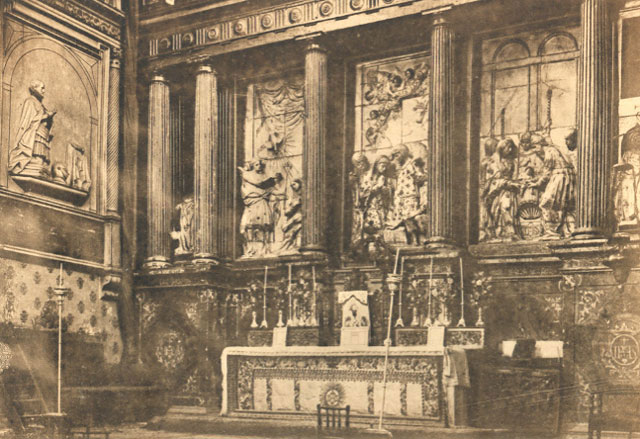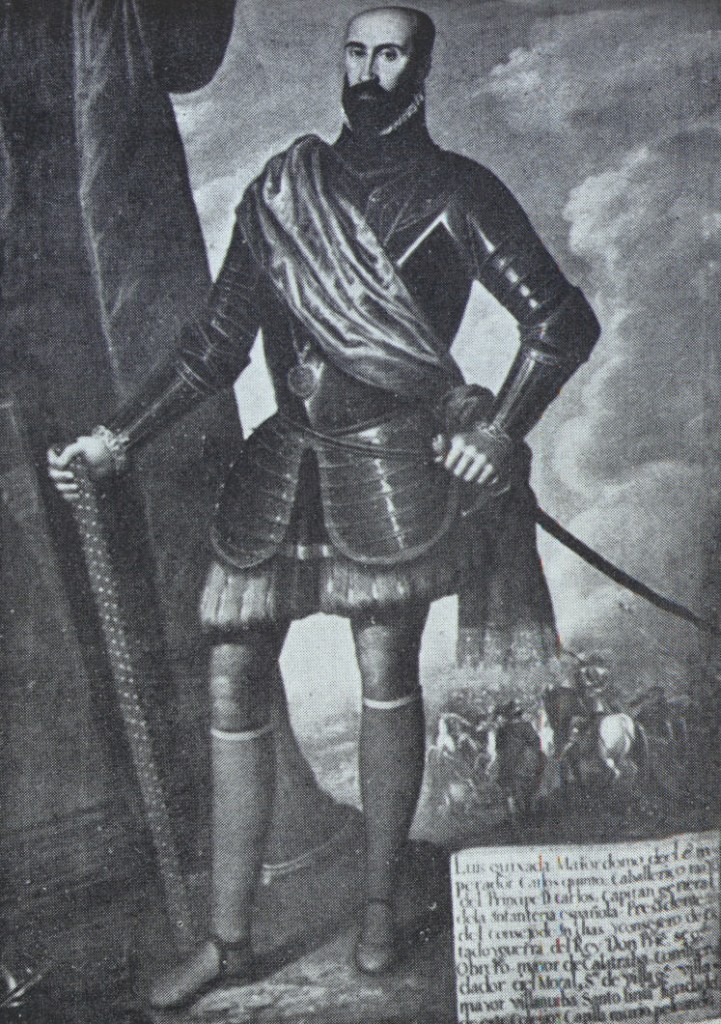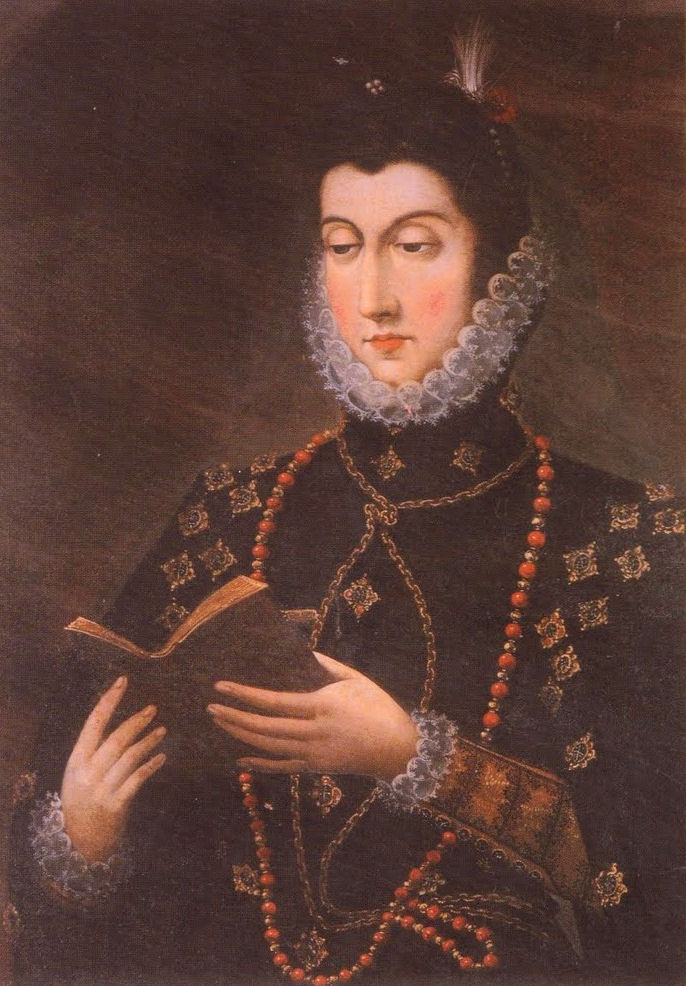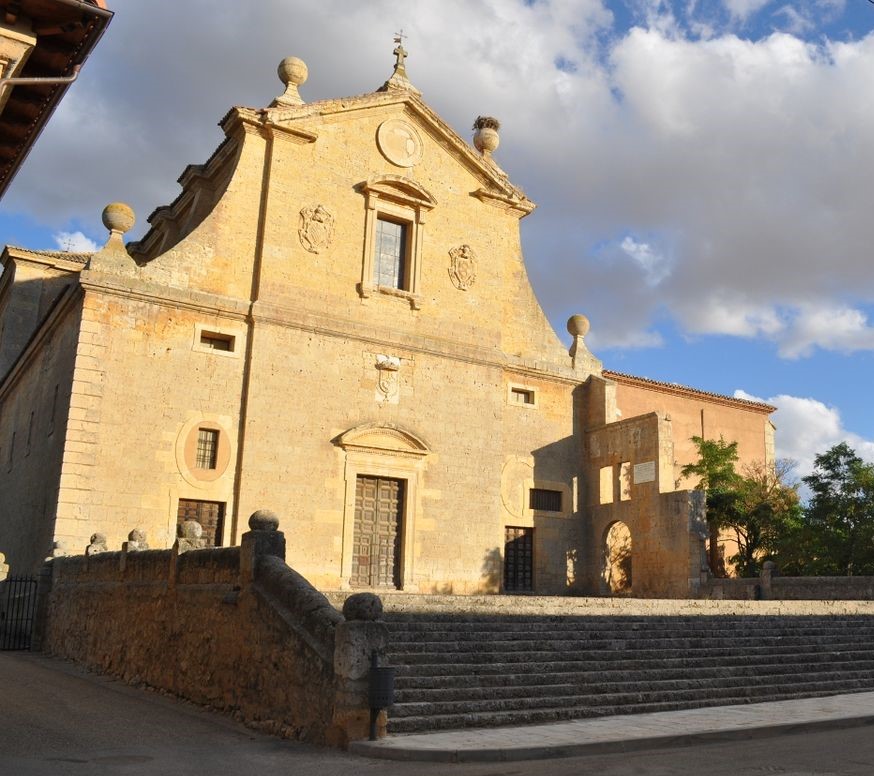Luis Quijada left the poor heirs of all his considerable wealth that was not entailed, and the usufruct of it to Doña Magdalena. He founded granaries and “monts de piété” in his four towns of Villagarcia, Villanueva de los Caballeros, Santofimia and Villamayor, founded schools, endowed hospitals with a special income that the dying should want for nothing, and added clauses referring to Doña Magdalena in this tender way: “And if Doña Magdalena thinks it best to join our estates and found some convent of friars or nuns, provided that they are not the bare-footed nuns, as it is so cold at Campos that they could not live there, in this case I give power to Doña Magdalena and my executors, that joined, she may dispose of and order them, as our wishes have both been to make a perpetual foundation with her property and mine, and that we should be buried together and have in death the same good companionship we had in life.”
On the morning of the 23rd Luis Quijada was rather restless from fever, and a little before noon Jorge de Lima arrived saying that Doña Magdalena was only one hour behind. D. John went to meet her at the entrance of the village, and led her himself to Quijada’s bedside. In his delirium Quijada did not know her, but at dawn this disappeared as the fever lowered, and he had long, loving talks with her. He again wandered in the afternoon of the 24th, and never again came to himself; this strong life was ebbing away, little by little, and on the 25th of February at dusk he quietly expired, as one who passes from the natural to the eternal sleep. D. John held the hand which grasped the candle of the dying, Doña Magdalena, on the other side, showed him the crucifix, and Fr. Christóbal de Molina, kneeling at his feet, commended the passing soul.
At the moment of death D. John embraced Doña Magdalena, pressing her to his heart, as if he wished to show that he still remained to love and care for her; the lady hid her face for a moment in that loyal breast, and three or four dry, hoarse sobs escaped from her, signs rather of manly sorrow than of feminine weakness; but she recovered herself at once, and with great calmness and devotion closed the dead man’s eyes, according to the custom of the times, sealing them with drops of wax from the candle of the dying; keeping the lids closed with her fingers and D. John dropping the wax. There were present the Knight Commander D. Luis de Requesens, the Marqués de la Mota, and the other captains and gentlemen who filled the poor habitation, the rest grouping themselves in the street, waiting sorrowfully for the fatal conclusion.
They dressed the corpse in his war armour, and, as a sign of piety, in a Franciscan’s cloak; the hands were crossed over the breast, on which rested his sword, whose handle was a cross. D. John arranged that the corpse should be exposed all the morning before the army, on a litter adorned with trophies and flags, and that in the afternoon they should carry it and bury it in the convent of the Heronimites at Baza, which was the place Quijada had himself chosen, until Doña Magdalena could carry it elsewhere.[1] All the army were on the march with arquebuses reversed, the lances, pikes and flags trailing, the drums muffled, the clarions and pipes untuned. The oldest captains carried the litter alternately, and behind them went D. John, riding a mule, covered to the ground with mourning, he wearing a cloak with a hood which covered him to the eyes, his standard of Generalissimo in front, not reversed like the other flags, but carried high as usual; the Knight Commander followed and all the leaders of the army, more or less wearing mourning, according to what black cloth they could procure in that wretched place.

Inside the Church of Colegiata de San Luis, where Don Luis de Quijada is buried. On the left is the statue of Don Luis de Quijada praying. Photo by Fundación Joaquín Díaz.
Doña Magdalena stayed on three days in the camp and then went to the convent of Abrojo, where she intended retiring for a few weeks. She travelled in a very comfortable mourning litter which D. John had provided for her, and he accompanied her for two leagues beyond Canilles, riding by the side of her litter. There they separated: she sad as one having left behind all she loved; he sad too—as sad as one can be at twenty-three.
1. The remains of Luis Quijada were translated two years later with much pomp to the church of S. Luis at Villagarcia by Doña Magdalena de Ulloa, where she also now rests near the high altar. The figure of his tomb no longer exists, but the inscription still does, which says that he is buried under the altar and that he died “as he would have wished, fighting against the infidel, 25 Feb., 1570” (note abridged by Translator).
Rev. Fr. Luis Coloma, The Story of Don John of Austria, trans. Lady Moreton, (New York: John Lane Company, 1912), Book II, pp. 201-203
Short Stories on Honor, Chivalry, and the World of Nobility—no. 664













